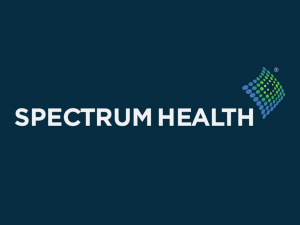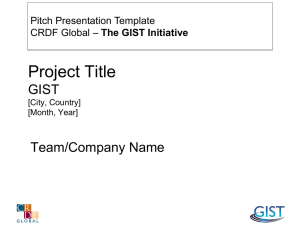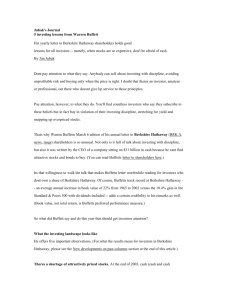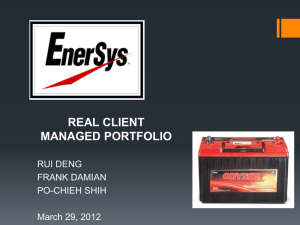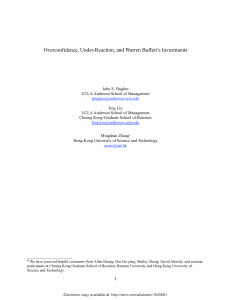risingsum-valueinvestingwebinar
advertisement
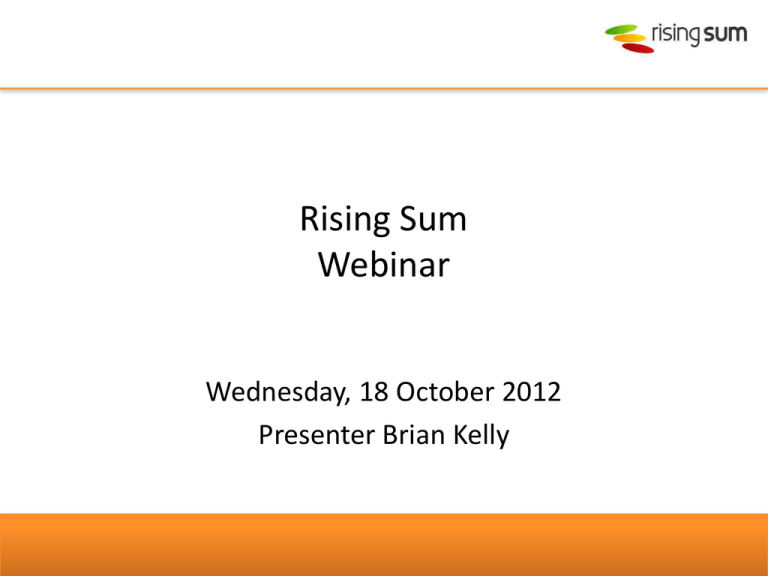
Rising Sum Webinar Wednesday, 18 October 2012 Presenter Brian Kelly Agenda • • • • • • • Value Investing introduction Warren Buffett & Berkshire Hathaway Berkshire Hathaway acquisition criteria Key Ratios & Alpha Slopes The Rising Sum model Suggested analysis method & Value reports Demonstration – Screening – Company Profiles – Apple & IBM – Watchlist 2 Value Investing 3 • Value investing is an investment paradigm that derives from the ideas on investment and speculation that Benjamin Graham and David Dodd in 1928. • It generally involves buying securities whose shares appear underpriced. • High-profile proponents of value investing, including Berkshire Hathaway chairman Warren Buffett, have argued that the essence of value investing is buying stocks at less than their Intrinsic Value. • The discount of the market price to the intrinsic value is what Benjamin Graham called the "margin of safety". The Intrinsic Value is the discounted value of future cash flows. • Mr. Market. An allegory used to describe the fluctuations in the market and describes a man who will turns up at your door, every day, and give you a price for your stocks. He is best ignored. Value Investing – Warren Buffett • Born September 30th 1930, he now has an estimated worth of $44 billion • Warren Buffet studied under Benjamin Graham at Columbia Business School before working for him as a security analyst at Graham-Newman Corp • Via a partnership he bought a textiles manufacturing company called Berkshire Hathaway, and turned it into an investment conduit due to the favorable tax benefits when companies own other companies • In 1970, as chairman of Berkshire Hathaway, Buffett began writing his now-famous annual letters to shareholders • Compounded annual gain from 1965 to 2011 is 19.8% (equivalent S&P500 return is 9.2%). 4 Warren Buffett investment record* 5 *source: Berkshire Hathaway 2011 Annual Report The Berkshire Hathaway acquisition criteria • Large purchases (at least $75 million of pre-tax earnings unless the business will fit into one of our existing units) • • Demonstrate consistent earning power (future projections are of no interest to us, nor are “turnaround” situations) Businesses earning good returns on equity, while employing little or no debt, • • Management in place (we can’t supply it) Simple businesses (if there’s lots of technology, we won’t understand it) • An offering price (we don’t want to waste our time or that of the seller by talking, even preliminarily, about a transaction when price is unknown) 6 Return On Equity • • • 7 Sustained Return on equity implies sustained growth but it’s important to check that this is the case. Shareholders’ equity can be calculated by subtracting the current liabilities from the current assets (aka net assets). Retained earnings, in most cases, make up the largest portion of shareholders equity. A company improving its return on equity will have a positive AlphaSlope. Net Profit Margin – ‘earnings power’ • • • 8 Net profit margin (aka return on sales) tells you how much profit a company generates for each unit of sales Companies that increase their costs quicker than their revenue will see their net profit margin decrease A company improving its net profit margin will have a positive AlphaSlope. Intrinsic Value & Margin of Safety - IBM • • • 9 Intrinsic Value is the sum of all future cash flows, discounted back to today. It uses the Compound Annual Growth Rate (CAGR) for the timeframe in question to derive a Sustainable Growth rate. Margin of Safety is the difference between intrinsic value and the current market price. A key question to ask – Is the Margin of Safety sufficient when considering the required sustainable growth? Alpha Slopes–a simple method for screening companies by modeling ratios over time Traditional screeners rank companies by latest results and would generate investments ideas in the order B, C and A Alphaslope screening ranks the companies based on their trend – i.e. Consistent improvement. The tool would generate investment ideas in the order C, A and B – although B would likely be removed from the result set as is it is on a downward trend and less than zero 10 How diverse is the market? The Bell Curve distribution for slopes shows how effectively Rising Sum can provide identification / screening of companies in an index 11 Comparing the Return On Equity Alpha Slope with CAGR Companies with negative RoE slopes have either positive or negative CAGR The majority of companies with positive RoE slopes also had positive growth Very few companies that have positive Return On Equity slopes had negative CAGR Note: additional ratio alphaslopes can be applied to further filter out negative CAGR companies 12 The Rising Sum model Existing tools screen for companies based upon But, a Value Investor needs to screen for • Latest financial data e.g. P/E, MarCap, etc. • Consistent Earnings • Return on Equity (TTM, averages, recent year) • Consistent Returns on Equity • Book Value e.g. Price/book ratio • Intrinsic Value & Margin of Safety “Demonstrated consistent earning power” - over time not just latest results. “Businesses earning good returns on equity, while employing little or no debt” – not just last period. “An offering price” - which is lower than intrinsic value by a sufficient margin of safety "Book value is what the owners put into the business, intrinsic value is what they take out of it.“ Warren Buffett 13 Qualitative Quantitative Suggested analysis method 14 Step 1 • Remove companies with negative CAGR • MoS between 75 and -10 Step 2 • Return on Equity AlphaSlope • Net Profit Margin Alpha Slope • Net Profit Margin > 9% Step 3 • Value Scores Step 4 • Annual Reports, news, quarterly data, press releases Step 5 • Top 5 selection Companies are evaluated based on 10 different criteria: •Margin of Safety •Return on Equity AlphaSlope value •ROE AlphaSlope consistency •Net Profit Margin AlphaSlope value •NPM AlphaSlope consistency •NPM financial value •How sustainable is their growth rate? •Is there a moat to protect the business? •How experienced is the management team? •A final discretionary score is given based on other key financial ratios Screening Company Profiles – Apple & IBM Watchlist DEMONSTRATION 15



